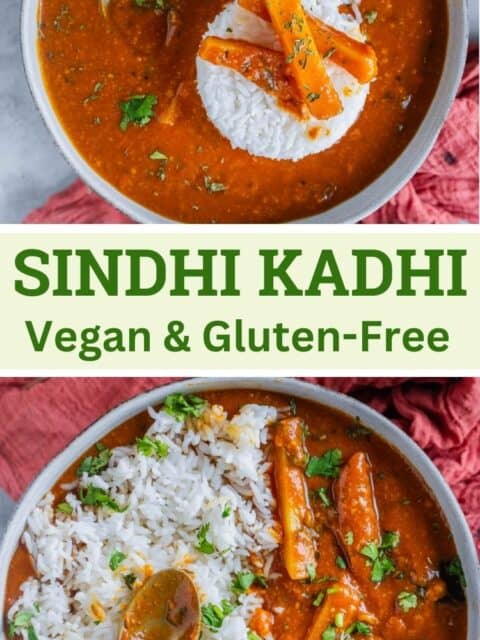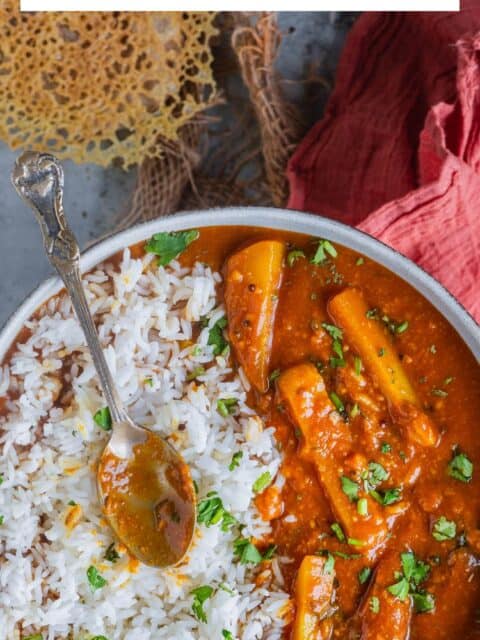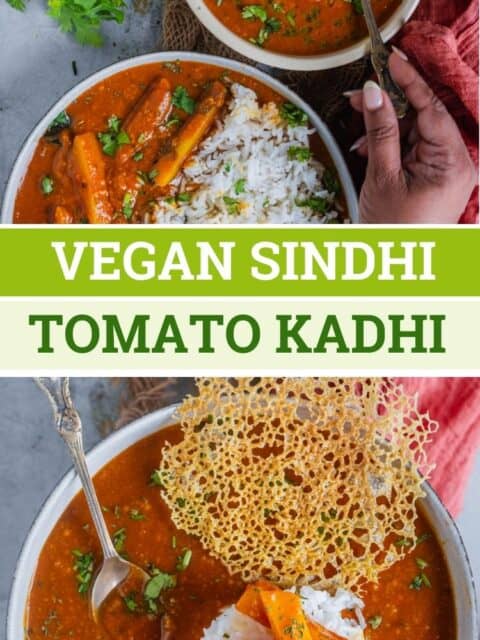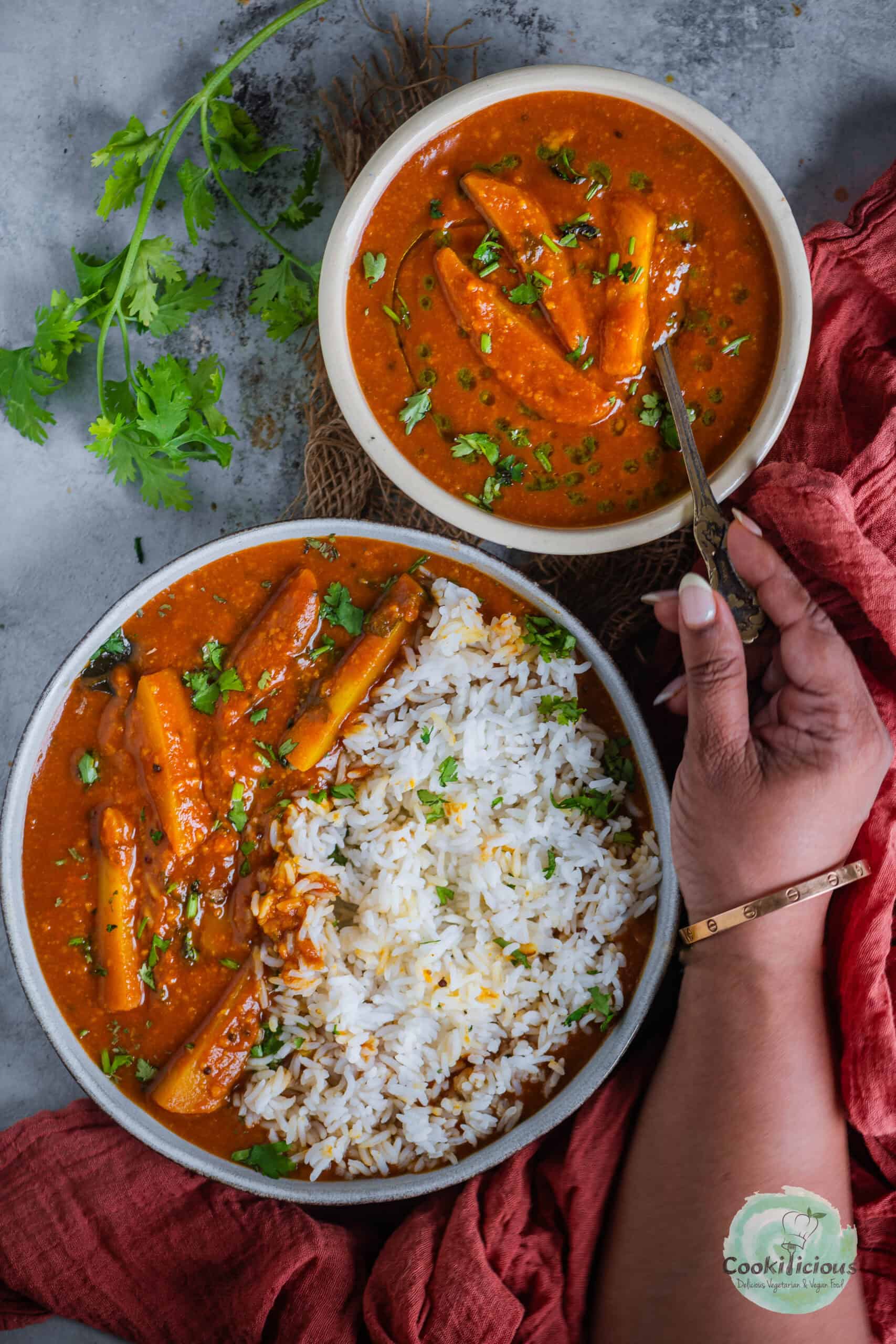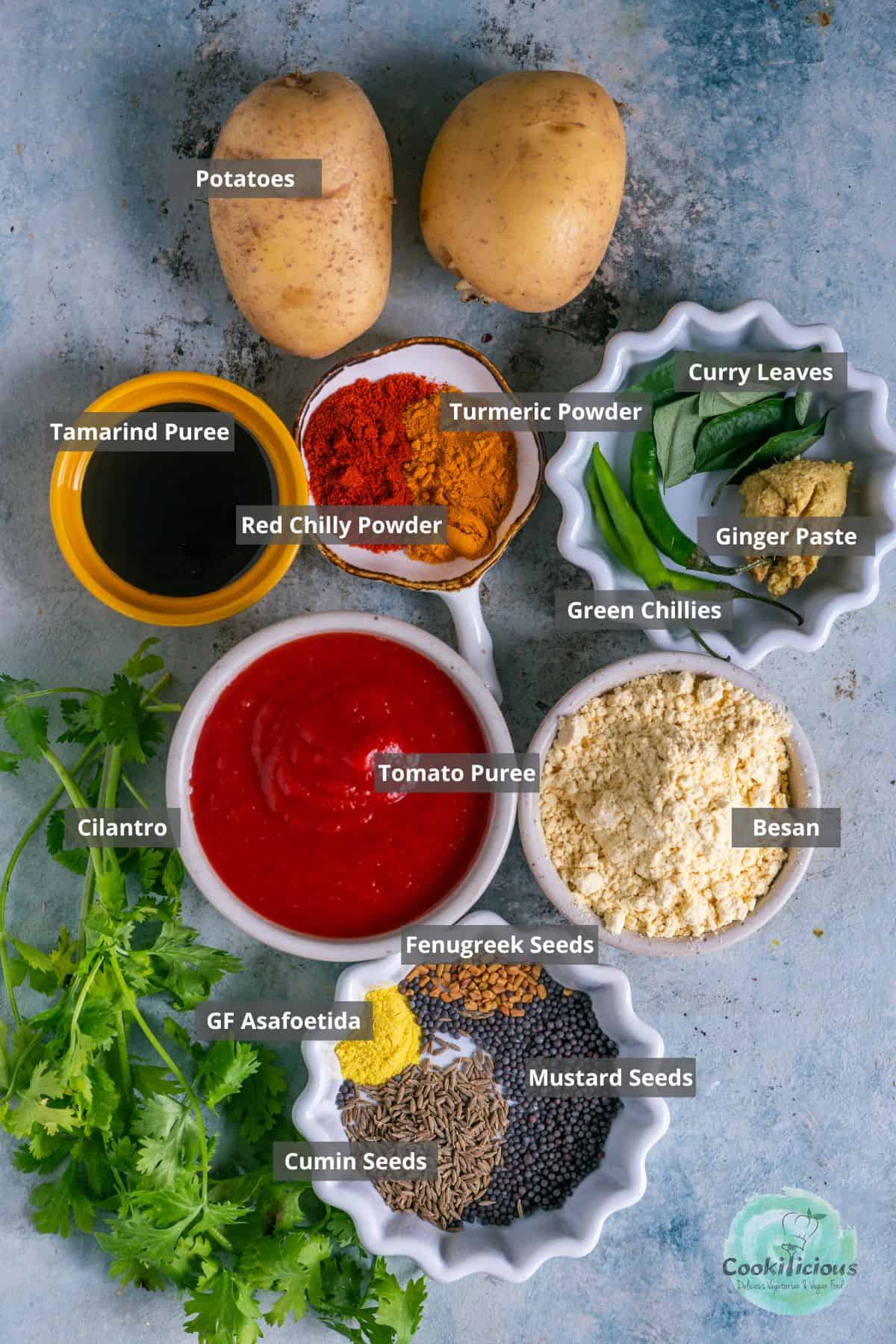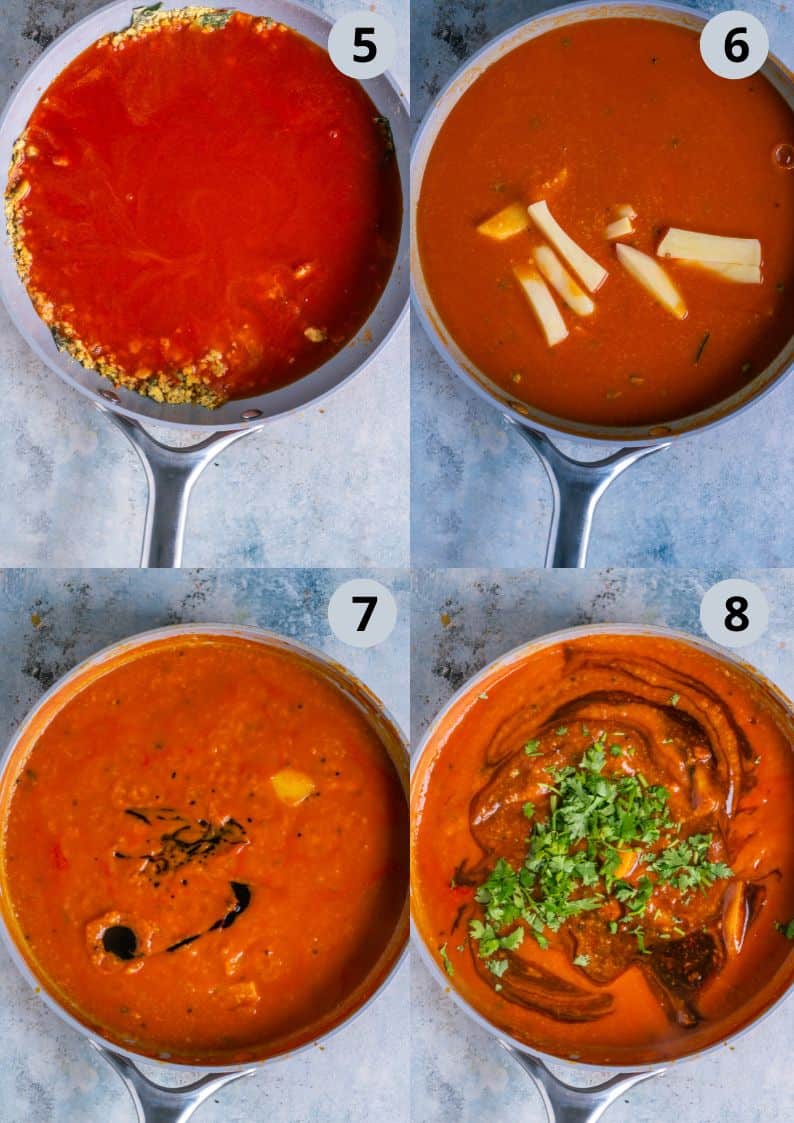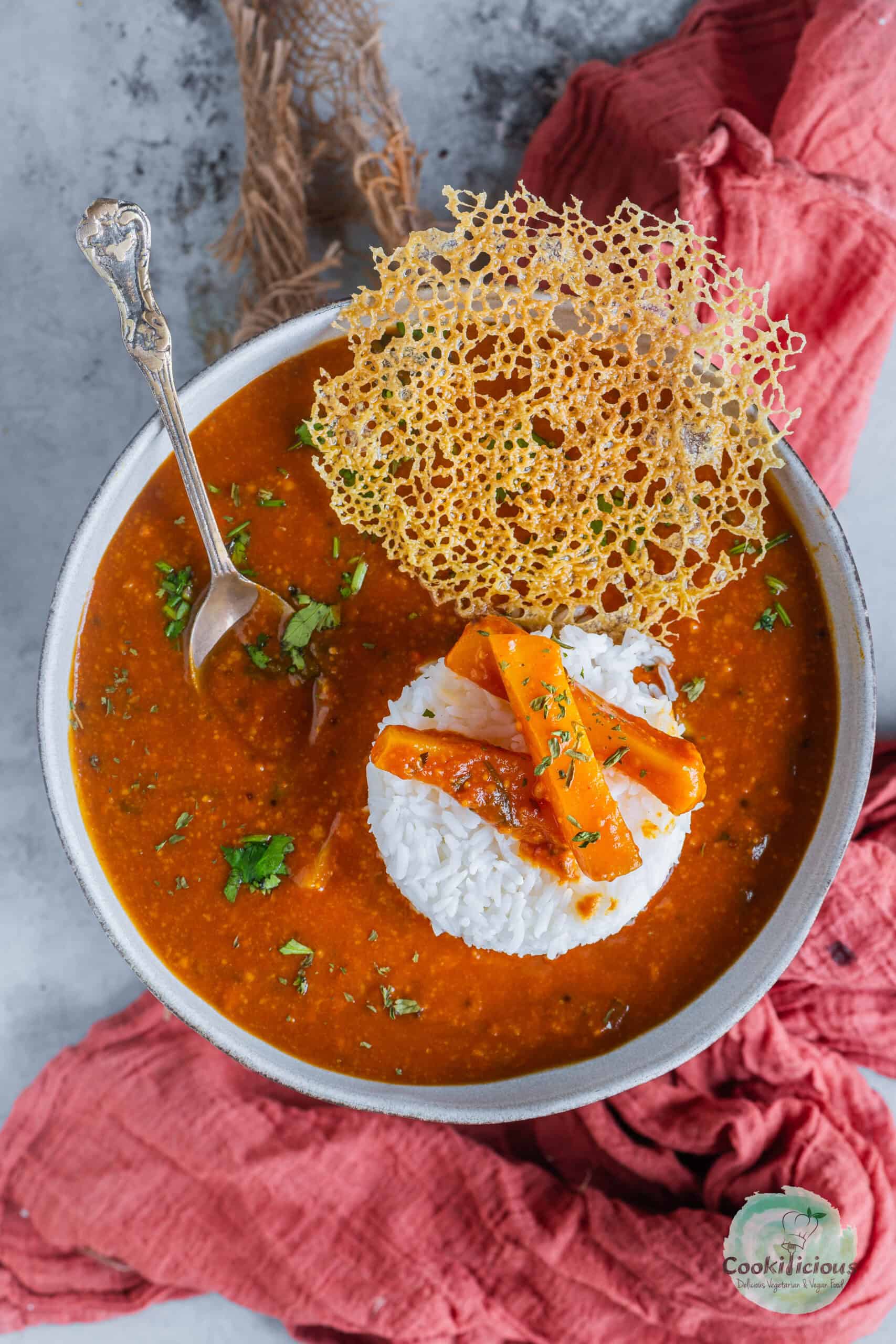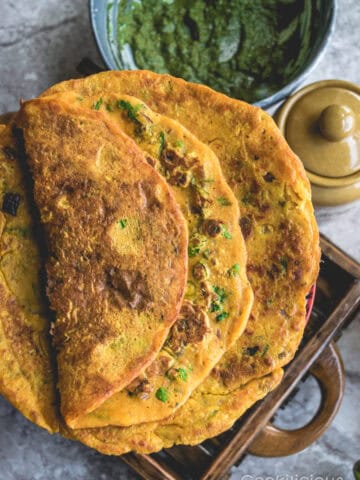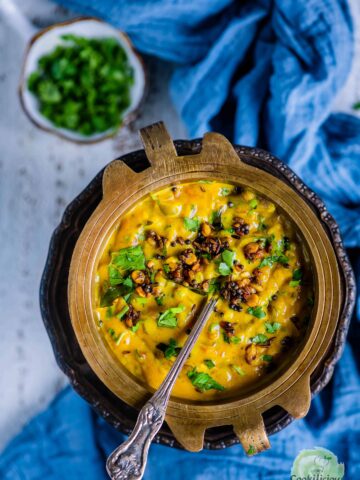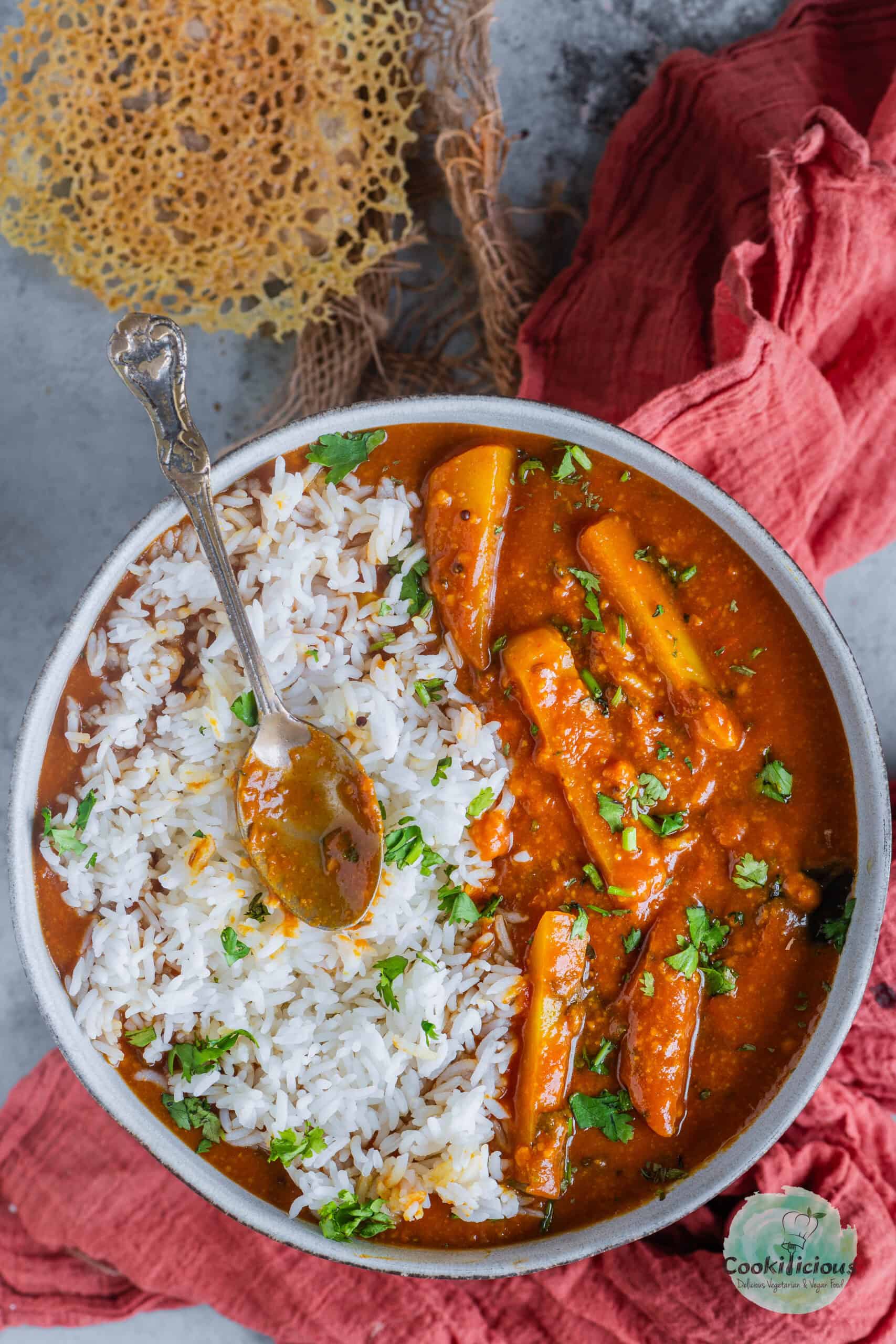Punjabi Kadhi: This rich and creamy Kadhi is made with yogurt and chickpea flour (besan) and features crispy fried pakoras (fritters), adding texture and substance. It is spiced with garlic, ginger, and green chilies, giving it a bold, tangy flavor. Rajasthani Kadhi: Simpler yet spicier, this version is prepared with yogurt and besan but without pakoras. It has a thinner consistency and relies on mustard seeds, cumin seeds, and dried red chillies for a more intense flavor, often served with roti or rice. Gujarati Kadhi: Light and mildly sweet, this variation is thinner and less spicy, balancing the tang of yogurt with jaggery or sugar. It is typically served with khichdi or steamed rice, offering a gentle, comforting taste. South Indian Mor Kuzhambu: This Kadhi-like dish from Tamil Nadu is made with yogurt and coconut, tempered with curry leaves, mustard seeds, and green chilies. It’s lighter and has a distinctive coconut flavor, often served with rice and vegetables. Sindhi Kadhi: Unlike other Kadhis, Sindhi Kadhi is naturally vegan and is made without yogurt. Instead, it uses tamarind and tomatoes for tanginess and includes a variety of vegetables such as okra, potatoes, and drumsticks, making it hearty and flavorful. It’s the best Kadhi recipe of them all! A key feature of this dish is the balance of flavors—it’s sweet, sour, salty, bitter, pungent, and astringent all at once. While some versions of Sindhi Besan Curry include a wide variety of vegetables like okra, potatoes, and drumsticks, every household has its take on the Sindhi Kadhi recipe. I like to make it with potatoes to keep it simple yet flavorful. This Sindhi veg recipe is also featured in my cookbook. Traditionally, vegan Sindhi Curry is cooked in a special vessel called Sipri, enhancing its taste and authenticity. Another variation uses tur dal (split pigeon peas) instead of tomatoes. Sindhi Kadhi is a vibrant reflection of Sindhi cuisine, which originates from the Sindh province (now in Pakistan) and is known for its flavorful and easy-to-make recipes. If you’re a fan of bold, balanced flavors, this restaurant-style Sindhi Besan Curry recipe is a must-try! Love Sindhi food? Check out this Dal Pakwaan Tostadas recipe. It’s yum! Some Pakistani-inspired recipes on the blog are Seviyan Kheer, Kofta Curry, Aloo Bharta, and Jhajhariya. Tomato Puree: For the best flavor, use fresh, ripe tomatoes to make your puree. Alternatively, you can use store-bought tomato puree. If you’re using whole tamarind, take a lemon-sized ball, soak it in hot water for 15 minutes, then squeeze out the juice to add to the curry. Tamarind: I prefer using store-bought tamarind pulp, puree, or paste, which adds a delightful tanginess to the Sindhi curry. If you don’t have tamarind, you can substitute it with kokum or amchur powder, though the flavors will differ. Vegetables: Feel free to customize the Sindhi Curry with any vegetables you like; I particularly enjoy making Sindhi Kadhi with aloo (potatoes). Spices: The essential spices for this famous Sindhi dish include mustard seeds, cumin seeds, gluten-free asafoetida, fenugreek seeds, red chili powder, and turmeric powder. Aromatics: To enhance the dish’s flavor, add curry leaves, ginger paste, green chilies, and fresh cilantro for a refreshing aromatic touch.
Rice Varieties: Serve the Kadhi with cooked white rice, brown rice, Jeera Rice, Matar Pulao, or alternative grains like cooked quinoa. For a low-carb option, cauliflower rice works perfectly. Side Dishes: Enhance your meal with Onion Pakora or Raita on the side. This simple Sindhi Tomato Kadhi can also be enjoyed as a soup, reminiscent of Tomato Soup. Flatbreads: Sindhi Kadhi complements a variety of flatbreads such as roti, crepes, naan, puri, or paratha, making for a hearty meal.
Sindhi families often prepare this dish along with Aloo Tuk and rice for satisfying weekend lunches, particularly on Sundays. Since Sindhi Aloo Kadhi is made without onion and garlic, it’s suitable for festive occasions such as weddings, Diwali, Navratri, Ganesh Chaturthi, Holi, and Raksha Bandhan. It can also be served alongside treats like Sweet Boondi and Sev. This vegan Sindhi Tomato Kadhi is a versatile dish that shines at parties, potlucks, brunches, or any special occasion, including holidays like Thanksgiving or Christmas. Enjoy the warmth and flavor of Sindhi Kadhi with your loved ones!
